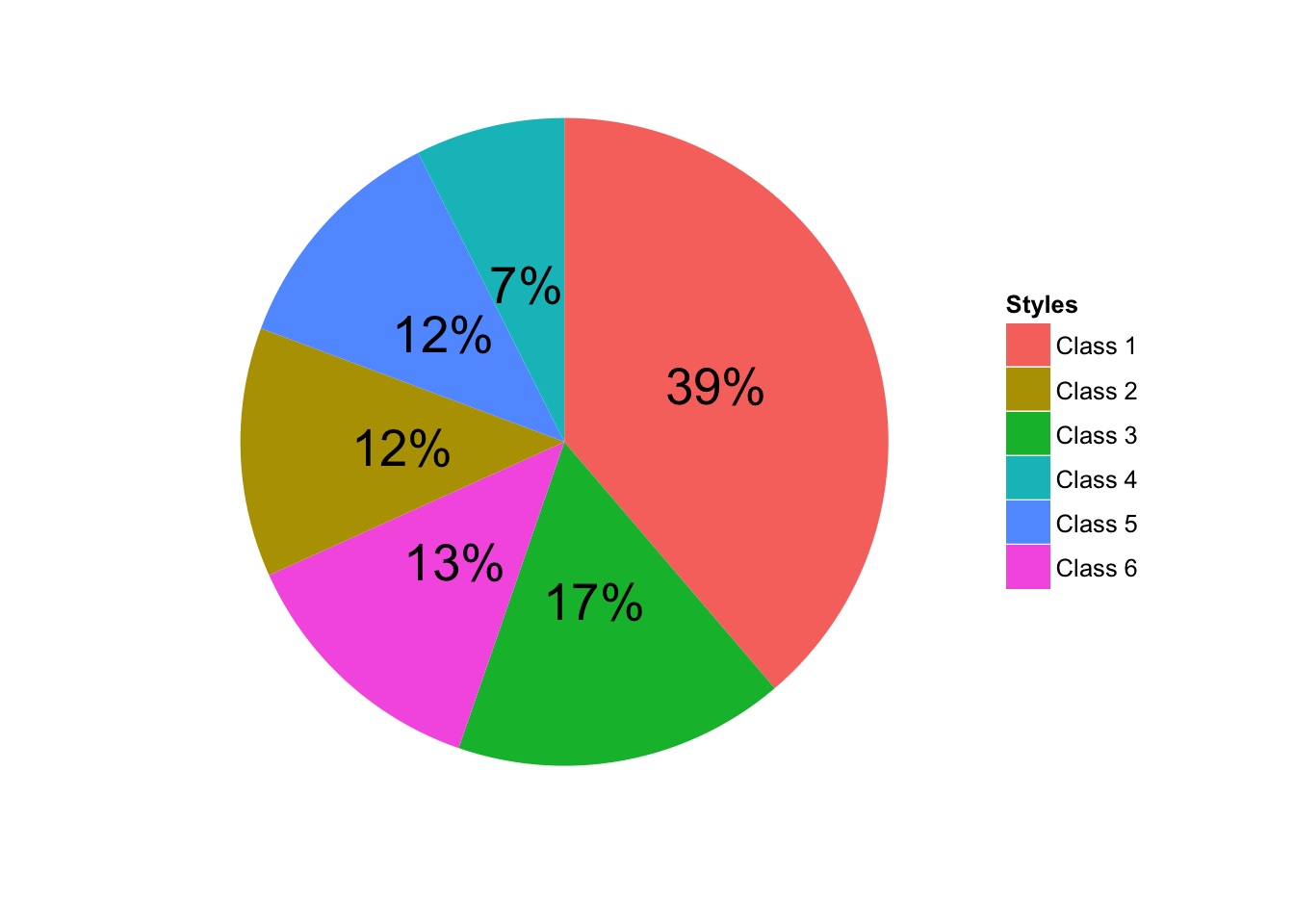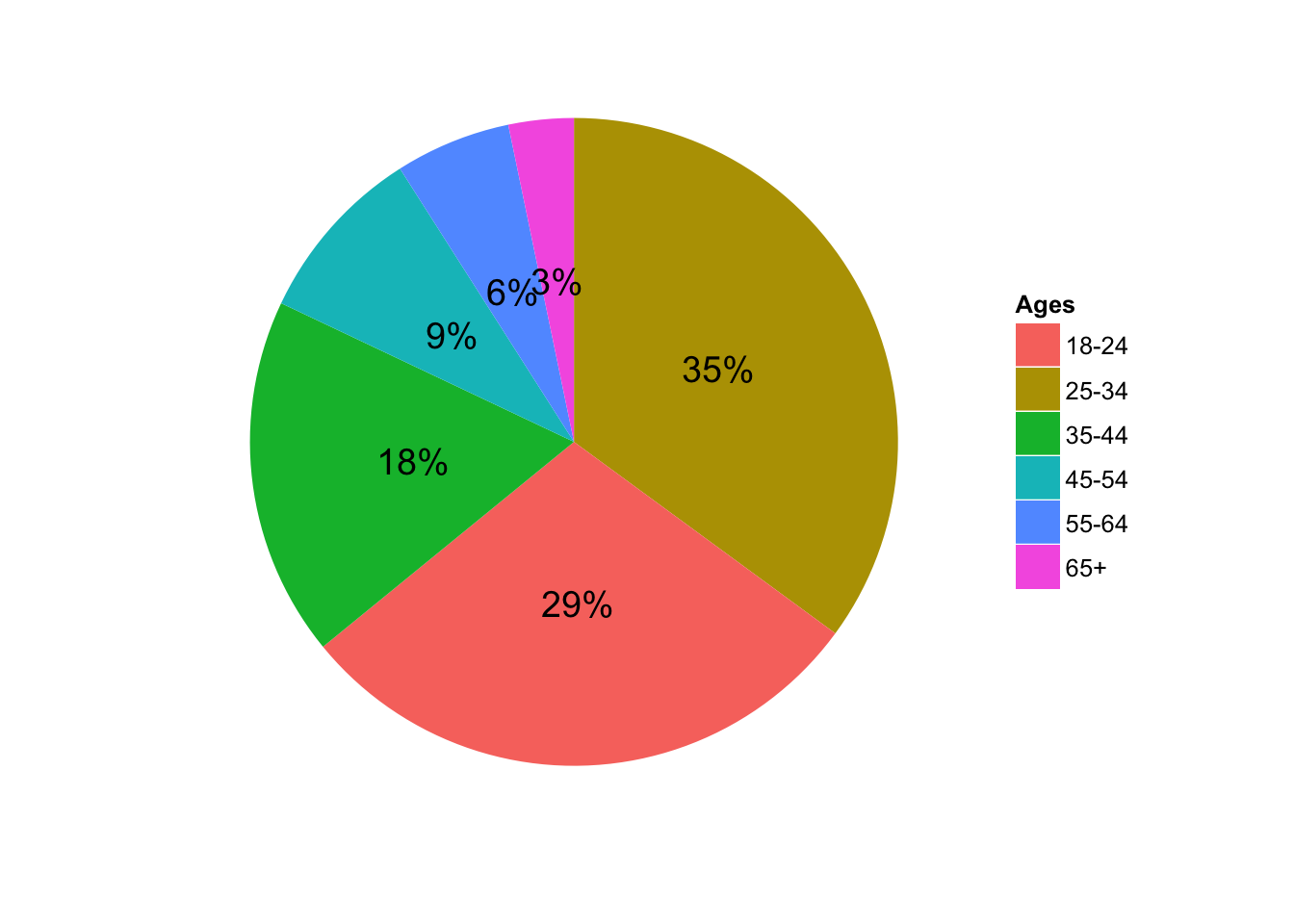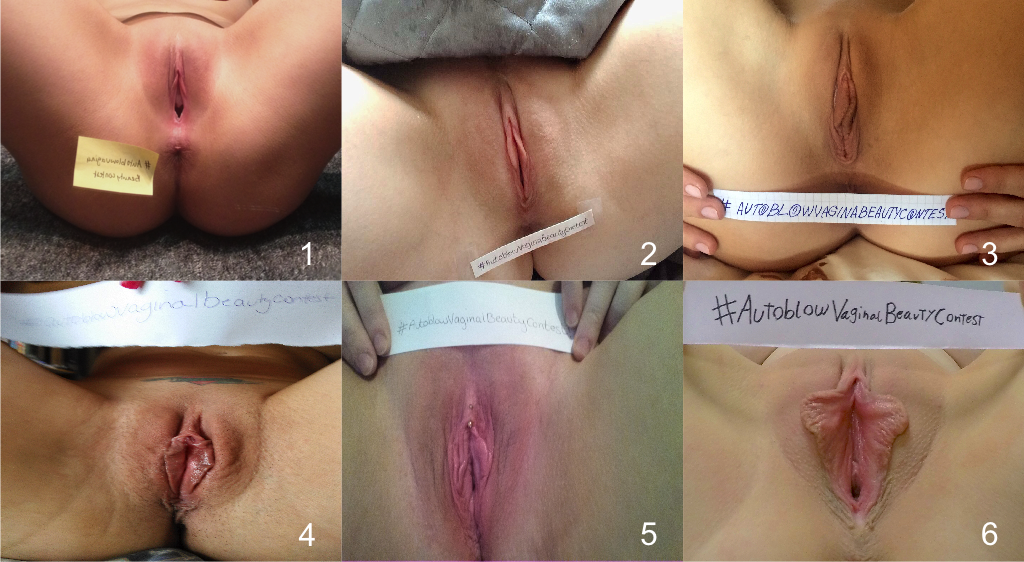The Vulva Paper
A Scientific Analysis Of The Autoblow Vaginal Beauty Contest’s Data
www.vulvapaper.com
Abstract
In this work, we examine data collected during the Autoblow Vaginal Beauty Contest. The original intent of the contest was solely to discover which vulva styles men wanted us to 3d scan and reproduce onto our product. But as the contest became popular online, we realized we had collected a vast quantity of data on a topic that warranted further research.
We used the contest data to assess the diversity in vulval morphology and voters’ preference for different morphologies. Labia length, protuberance, and rugosity data coded on images submitted to the contest allowed us to classify vulvas into six styles based on an increasing degree of protrusion and complexity. Roughly 51% of voters preferred the first two classes of non-protruding, simple labia. The other 49% favored the four more complex vulva classes.
Introduction
Vulvas are diverse. Dimensions, color, labia minora size, and rugosity present a broad range of variability. Nevertheless, very little is known about how people perceive such diversity. This work investigates the diversity of vulvas and the public opinion about different vulval morphologies.
Methods
Sample
182 women submitted photos of their external genitalia to an online vulva beauty contest organized by the manufacturer of the Autoblow 2, a crowdfunded robotic masturbation device for men. To enter the contest, women had to be at least 18 years old and submit a picture of their external genitalia between June 8th and July 6th, 2015. The contest rules required that all photo entries showed, within the photograph, both the female genitalia of the entrant and piece of paper with the contest name typed or handwritten.
Upon submission, each participant was requested to provide their age and their general geographic location, precise up to country level. No other details were recorded about the entrants.
Coding
Following Howarth et al. (2010) we measured ratios of genital morphology. We displayed each photo on a 15’’ computer screen, and we zoomed them until the genitalia were easily measured using a screen ruler. We measured labia majora length, labia minora length, and clitoral hood length. The photos were non-standardized images, and, therefore, the lengths were later transformed into ratios: labia minora length/labia majora length and clitoral hood length/labia majora length.
In addition to the quantitative measurements described above, we estimated the protuberance of the labia minora following Howarth et al. (2010). We registered how much they protruded from the labia majora in 4 levels, 1 to 4, from less to more protruding. We coded labia minora complexity using three categories of rugosity: Smooth, Moderate, Marked (Lloyd, 2005).
All measurements were made by the same person to avoid variability between observers.
We dropped photos from the sample when the vulva was somehow obscured and prevented taking any of the measurements, or estimating labia rugosity or protrusion. The final sample included 110 photos. Table 1 lists our measurements for each of the photos in the final sample
Table 1. Measurements taken from the photos in our final sample. LMinL: Labia minora length; LMajL: Labia majora length; Lab. Min. Prot. Labia Minora Protuberance.
Ratings
We collected 2,766,671 ratings from 134,707 distinct visitors via the contest web page. We delivered a random selection of photos to each voter and asked the voter to rate the vulva depicted on each image on a 1-10 scale. Voters considered the vulvas one at a time and a voter could vote for an unlimited number of photos. In addition to the picture, the woman’s pseudonym, her age and general geographical location were shown. We used MaxMind API to estimate each voter’s location using his or her IP address.
Some voters used only a part of the 1 to 10 scale while others used all of it. To reduce individual biases, we centered each voter’s ratings using their mean and standard deviation. This allowed us to reflect the preferences of voters on the same scale.
Data analysis
Analysis of the data was performed using the R statistical software (version 3.1.2).
Style classification
We used the ratios, protrusion degree, and rugosity to partition the photos into different classes of vulval morphology. For that, we applied a K-Prototypes clustering analysis (Huang, 1998) to the coded data using the pclus function in the clue package.
We treated the ratios as numerical features and the protuberance and rugosity as ordinal features. We computed dissimilarity using Euclidean distance for numerical features and L1-norm for ordinal features. Our consensus function calculated the mean value for continuous features and the mode for ordinal features. To select the number of clusters, we started with two groups and inspected the results. If the resulting groups were not homogeneous to the eye, we increased the number of clusters.
Results
First we present the styles found; then we analyze how voters perceived those styles.
Vulva Styles
The final number of clusters was 6. Table 2 shows the feature values for each vulva prototype and Figure 1 illustrates one example of each style. Our classification covers the samples that Lloyd et al. (2005; Fig. 2) exhibited to display the diversity of labia minora sizes. We named the vulva prototypes as Class 1 to 6, where Class 1 was the simplest looking genitalia and Class 6 was the most complex.
Labia minora in Class 1 don’t protrude and are soft. Class 2 labia are also soft, but they protrude slightly from the labia majora. Classes 3 to 5 display protruding labia minora. Classes 3 and 4 have moderate rugosity, but Class 3 has a longer clitoral hood that results in a dangling appearance. Class 5 vulvas exhibit more rugose labia than Classes 3 and 4. Finally, most protruding labia belong to Class 6 vulvas.
Table 2. Vulva prototypes resulting from cluster analysis and percentage of entrants in each cluster. LMinL: Labia minora length; LMajL: Labia majora length; Lab. Min. Prot. Labia Minora Protuberance.

Figure 1. Examples of each style class.
Figure 2 shows the distribution of ages in each group. We can see that age is quite diverse within each class. Only Classes 3 and 4 had a higher age on average (p < 0.1 and 0 <0.05 respectively) than Classes 1, 2 and 6. Class 5 included a broad range of ages.

Figure 2. Age distribution among the six styles.
Figure 3 displays the number of the entrants per country and Table 3 lists this information in more detail. Here, we don’t consider entrants that we dropped from the sample. Clicking on the map provides further details about the distribution of Classes within each country. Most of the entrants live in a western country. Particularly prevalent is the participation of the United States and the United Kingdom. Also, only the United States has a representation of each style.
Figure 3. Geographic distribution of women participating in the contest. Click on each country for a detailed distribution of styles in the country.
Table 3. Number of entrants per country.
Style preferences
Each voter rated 21 photos on average, and each photo received 15,285 votes on average. Figure 4 shows the geographical distribution of people rating the images, while Tables 4 and 5 display the information in more detail. Clicking on each country will display the ranking order of vulva style in that country. The western nations led the participation in voting the ratings, with the United States at the top.
Most countries preferred Class 1 vulvas over the others, frequently followed by vulvas of Class 6 and 3. Nevertheless, a closer inspection shows some variability, with other Classes occupying the first positions in their national ranking. For example Class 2 is preferred in Slovenia and Croatia, Class 5 is at the top in Angola, and Class 4 is the favorite in Syria.
Figure 4 also shows style rankings for those cities with at least 100 voters. Local rankings often agreed with the corresponding national rankings. Most cities preferred Class 1, but, differing from their national rankings, people in Barcelona and Kansas City preferred Class 6; Ottawans voted for Class 3, and San Franciscans preferred Class 2.
Figure 4. Geographic distribution of voters by country. Also, cities with more than 100 voters are shown. Clicking on any country or city reveals a national or local ranking of vulva styles.
Table 4. Number of voters per country and favorite style in the country.
Table 5. Number of voters per city with more than 100 voters and favorite style in the city
To get a global ranking of vulva classes, we selected those voters (n=44,943) who voted on at least one photo belonging on each style and computed their average rating for each group. Figure 5 shows the percentage of voters who prefered each style over the others. As expected from the rankings that we saw at the country and local levels, Class 1 vulvas are preferred over the others more often. But the combined percentages of voters who preferred more complex classes of vulvas far outweighed those who preferred the simplest style.

Figure 5. Global style preferences.
We didn’t find any significant pattern in ratings related to the time of day or day of the week the vote was cast. Women’s age did not play a relevant role in voters decisions as each year of age above 18 increased only by 0.4% the odds of getting a lower rating. Nationalism didn’t play a significant role in ratings either; the data showed that voters didn’t rate their own nation’s vulvas higher than foreign vulvas.
It is important to point out, though, that the actual winners of the contest were among the entrants whose photos were dropped. The posture of the women prevented us from coding their vulvas. Their photos shared in common a doggy style position that could have triggered some influential excitement among the voters. Indeed, pictures depicting contest entrants in a doggy style position obtained ratings 2 points higher on average (p <0.001) than others. Other features, like piercings in the clitoral hood, didn’t affect the ratings.
Analysis of the contest visitors
Although we primarily wrote this paper to explore our data regarding vulva styles and their popularity, our Google Analytics data collected during the contest was equally interesting.
About 1.2 million people from 191 countries visited the contest web page. 13.37% of those visitors became active voters in our contest. The contest was widely written about online, including popular websites such as Cosmopolitan, Huffingtonpost, Unilad, Brobible, The Daily Beast, The Daily Dot and Glamour. Figure 6 shows the evolution of the number of unique visitors. We have highlighted the dates of publication of some featured articles that had a significant impact on the popularity of the contest around the world.
Figure 6. Evolution of the number of visitors during the competition. Vertical lines mark the date of publication of some featured articles about the contest.
The contest’s impact was worldwide, with a few exceptions. Unfortunately, no one from North Korea, Central African Republic, or Chad visited the contest’s webpage. Most visitors came from North America and European nations, with some exceptions including South Korea, South Africa, India, Kenya, and Brazil each of which sent a significant number of visitors to the contest.
Our data showed that Finnish people were particularly interested in vulvas considering over 1.3% of the country visited the webpage. Next was Hungary – half a percent of its populace came to view and vote on vulvas. We solute those brave (or horny) men or women who came to visit the contest from these countries which each sent fewer than 3 visitors: Turkmenistan, Tonga, Solomon Islands, Equatorial Guinea, Cook Islands, Burundi, Tajikistan, Togo, Mali, Liberia, Gambia, Burundi, and Cuba.
Hello to the guy who visited and stayed 16 minutes from Palau, the 3 people who on average stayed 14 minutes from Vanautu, and the 22 Libyans who on average viewed and voted on vulvas for twelve and a half minutes each. We even had 4 visitors from the new nation of South Sudan.
Among the European nations, those from Lichtenstein voted on the most images per voter on average: more than 15. Finally, we were happy to see we even had two voters based somewhere in Antarctica.
Table 6. Per country: number of visitors, percentage of the population in the country that visited the contest, number of pages viewed per visitor and average time a visitor stayed on the contest website.
Most people visiting the contest were under 45 years old (Figure 7). Nevertheless, we recorded a significant number of visitors above that age. The contest visitors were unsurprisingly 81% male and 19% female.

Figure 7. Distribution of ages among visitors.

Figure 8. Gender of visitors.
We observed a variety of behavior regarding returning visitors. The data showed while most people only visited once, others returned multiple times. Some, it seems, found that the content of the contest was particularly compelling. As we can see in Table 7, 17 visitors came back to the contest page more than 100 times.
Table 7. Number of visits per visitor
On the technological side, 52.78% of our visitors used a mobile phone, only 5.42% used a tablet and 41.80% used a desktop computer. Table 8 lists the browsers that our visitors used to access the contest page. As we can see, Chrome was the indisputable leader, and among the four main browsers Internet Explorer was the least used.
Table 8. Browsers used to visit the page.
Discussion & Final Remarks
We collected images portraying female genitalia during a vulva beauty contest, and we took measurements of vulval morphology. We also coded the complexity and protuberance of their labia minora. Then we classified the female genitalia into six style classes ranging from smooth non-protruding labia minora to complex and very protruding labia minora. We then examined the popularity of those styles among the contest voters.
Lloyd et al. (2005) stated that female genitalia diversity is poorly documented. Our study provides extra evidence and confirms such diversity is broad regarding labia size, protuberance, and rugosity. It also provides evidence that both simple and more complex vulvas have a nearly equal percentage of admirers.




